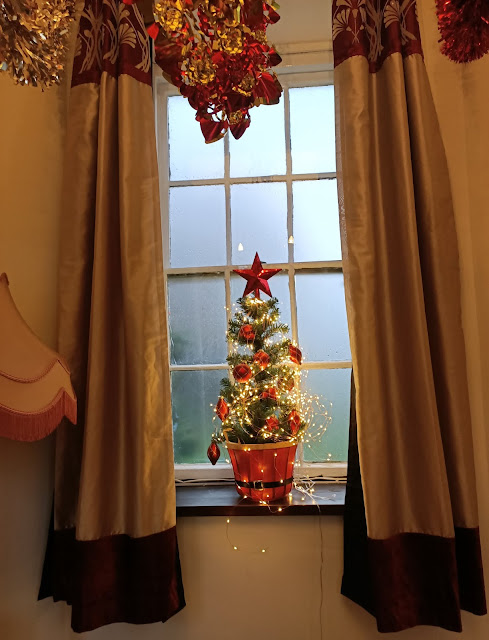October, and the Peace Garden
 |
| Tidying the formal borders. Photo: Su Hurrell |
 |
| Photo: Su Hurrell |
Nigel has been working with the utilities companies, to see how feasible service reconnections are. The good news is we now have water back on site. Nigel and our handyman, Shane O tracked down a missing buried stopcock to one the flats destroyed in the fire. It’s allowed them to cut off the water to all of the irretrievably damaged flats, but means water can now reach the two flats at the back of the house. We should have some form of ‘welfare facilities’ (loos, washing facilities) for the two Mr O’s shortly. Power will be more of a challenge, but Nigel is working out how that might be achieved with the relevant companies.
Despite the lack of facilities, the two Mr O’s are doing sterling work on the repairs to the paths around the Dingle. This entails shifting tonnes of gravel by wheelbarrow to where it is needed for repairs. The finished results are impressive, restoring the paths to their former glory. We hope that folk will be able to enjoy our efforts sometime next year, if and when we are able to hold a couple more trial openings.
 |
| The smart new pathways, freshly dressed with new gravel |
Back at my studio in Stoke, I am working on information boards for the gardens. We’ll use these to share hidden bits of history with visitors, along with notes on how we’re managing the environment in the gardens. I was working on a board for the Peace Garden, a pleasant lawn area visible from Court Walk. Until the fire, this was the main entrance for our residents. The Peace Garden was instigated by Prof Brown in 1995, and marked a number of anniversaries; 50 years since VE and VJ Days, 50 years since the establishment of the UN and 125 years of the British Red Cross.
As a new graduate of art, I worked in Prof Brown’s antique gallery in 1995, a fantastically varied job, covering restoration and research along with the usual duties of a sales assistant. One day the Professor presented me with a World War Two air raid siren that had been discovered during roof repairs, and asked if I could make a sculpture to commemorate the anniversaries, and mark Betley Court’s role in the War. As, I said, my job at the gallery was varied! Suffice to say, the Peace Sculpture I made from the air raid siren, and scrap materials salvaged from around the building now sits at the centre of the Peace Garden. Over the years the Professor added international-oriented artifacts to the Peace Garden, reflecting his interest in the importance of dialogue and co-operation to steer us away from further conflicts. This includes a Peace Pole which joins Betley Court, in friendship, with a network of similar poles throughout the world. The garden is now associated with the International Peace Garden Foundation based in the USA, and a wreath is laid every Armistice Day.
During my research, I came across a fascinating artifact, or at least a facsimile of one in a local library at nearby Audley, relating to Betley Court during WW2. It was the reproduction of a page from Betley School’s log book, dated 25th Jun 1940, and concerned emergency provisions for children in the event of an air raid. The role at Betley’s small church school were swollen by the arrival of children from a school in Ramsgate. Mass evacuation of children started in Britain the previous autumn, on the 1st September 1939, and the Ramsgate Children were billeted with families all around Betley village.
In beautiful hand-scribed writing, the excerpt explains that,
“Ramsgate Children, who are unable to reach
their billets in 5 minutes are taken to the cellars of the Black Horse Inn*
where they will be able to shelter if an air raid warming is sounded in school
hours.
Betley Children, who cannot reach home in the
stipulated 5 minutes will shelter when necessary in the cellars of Betley Court”
*Now Black Horse House
I am intrigued as to why the children were segregated in such a way, with locals sheltered in the ‘Big House’ and incomers relegated to finding refuge under the pub. Was it simply a practical arrangement, given the size of the cellars at both venues? Did the Squire favour the local children over the evacuees? We’ll probably never know. However, in the event children sought safety under Betley Court, from German air attack, they would have crossed what is now the Peace Garden, to find the cellar entrance hatch. If you peer very carefully across the Peace Garden from Court Walk, you can just pick the hatch out, under the rubble left by August’s fire.
 |
| Back at the studio, recording the weeks work in the garden journal. Photo: Su Hurrell |
Ladybird Su



Comments
Post a Comment